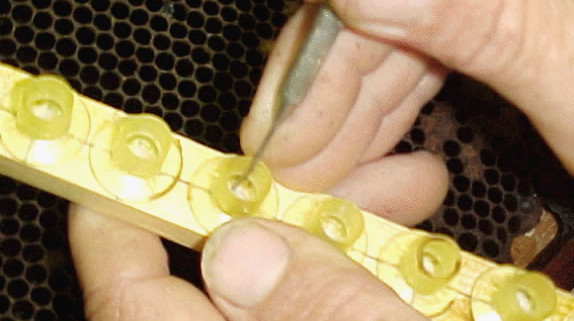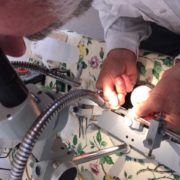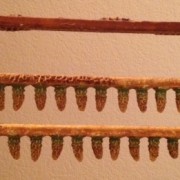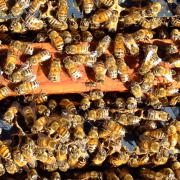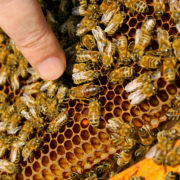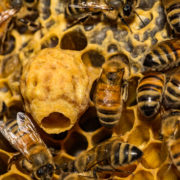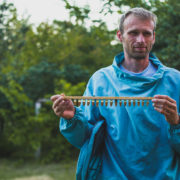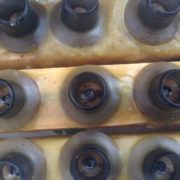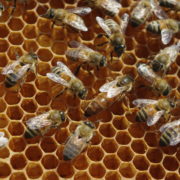Grafting Queen Bees
The act of transferring young larvae from breeder queens into cell building colonies is called “grafting.” Queen producers do a lot of grafting. Every future queen bee for sale begins with the simple act of grafting; the transferring of larvae from a breeder queen into a cell cup, and then into a queen cell building colony. It is with this method that the entire commercial queen rearing industry produces queen cells, which hatch into future queen bees.
Grafting is one of the more technically challenging parts of raising queens. The grafter should have excellent eyesight, and a sure hand to be able to pick up tiny larvae that are about the size of the tip of a ballpoint pen. The grafter uses a special tool (known as a grafting tool), which slips underneath a larva and scoops it up along with some of the surrounding jelly. The larva is then carefully placed in the center of the receiving cell cup. Ideally, there should be no impact on the larva whatsoever; as the act of grafting needs to be a smooth and gentle process. Larvae are extremely fragile, and grafting needs to be done in a warm, well-lit, and relatively humid environment. Speed is also important, as the larvae should not spend too much time outside of the colony and run the risk of drying out.
We have found that our best grafting sessions take place when we are calm and relaxed. Too much sugar or caffeine can lead to a shaky hand! Calm and steady is the key, one larva at a time.
Photo is courtesy of Glenn Apiaries, with permission.

